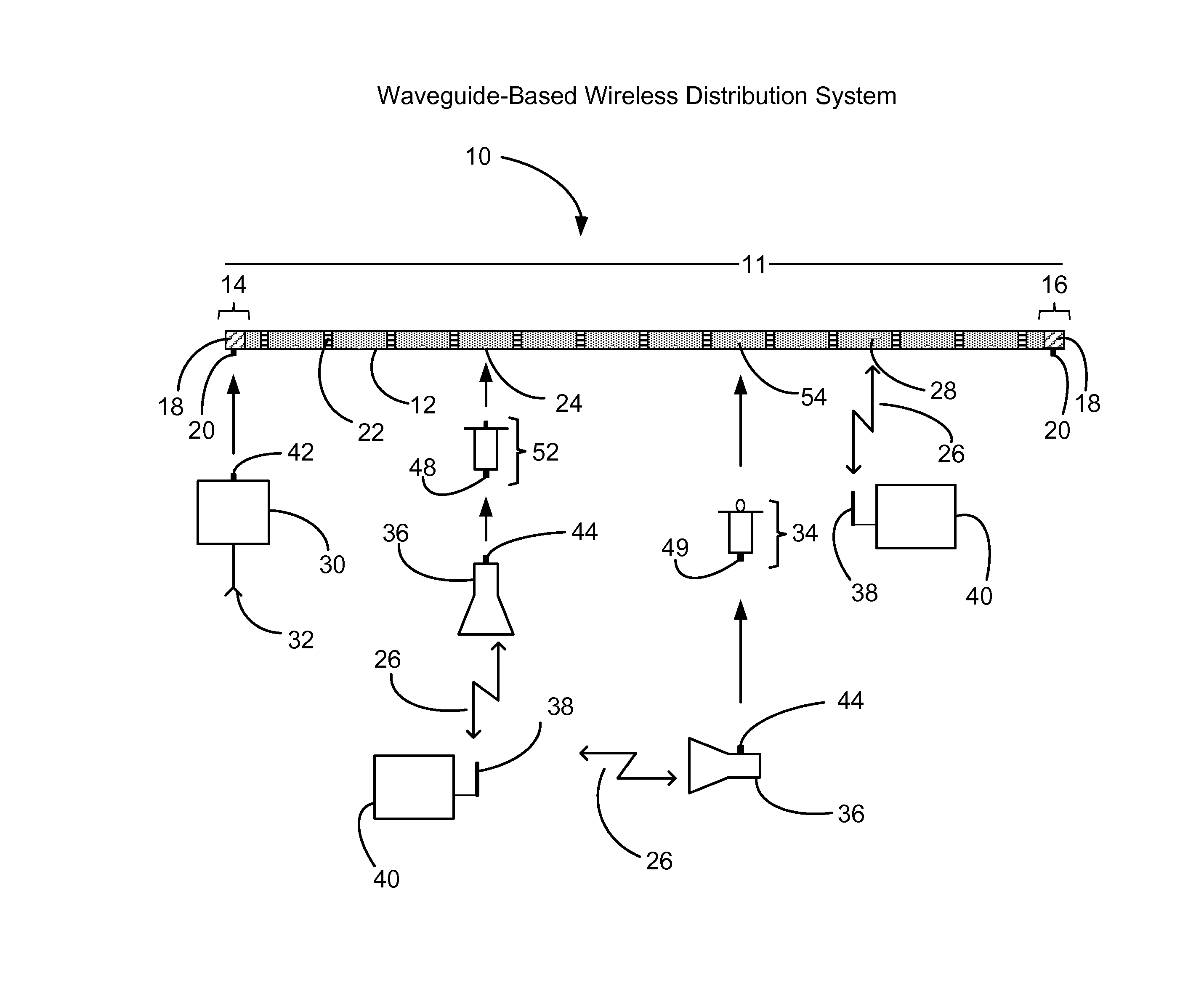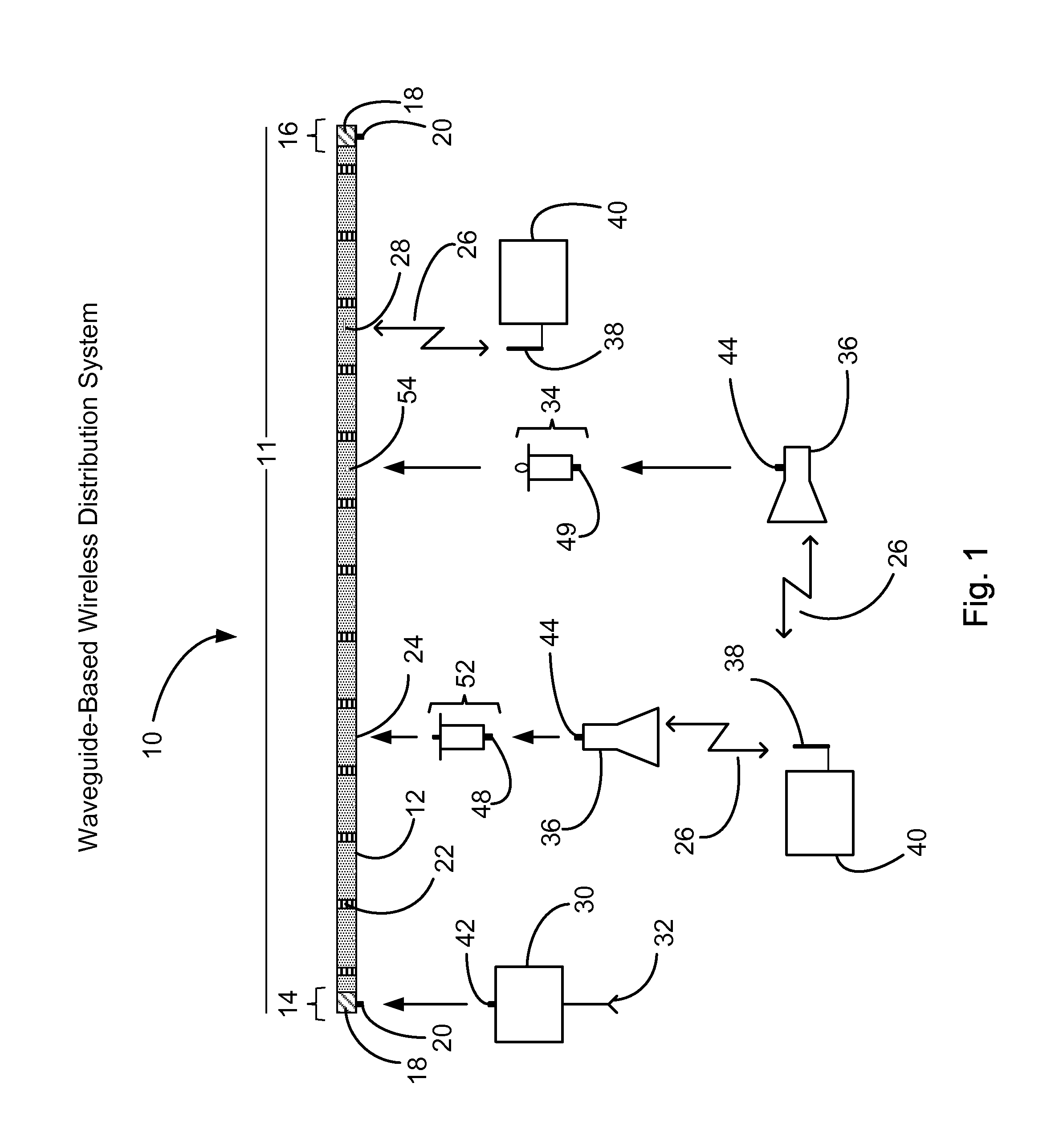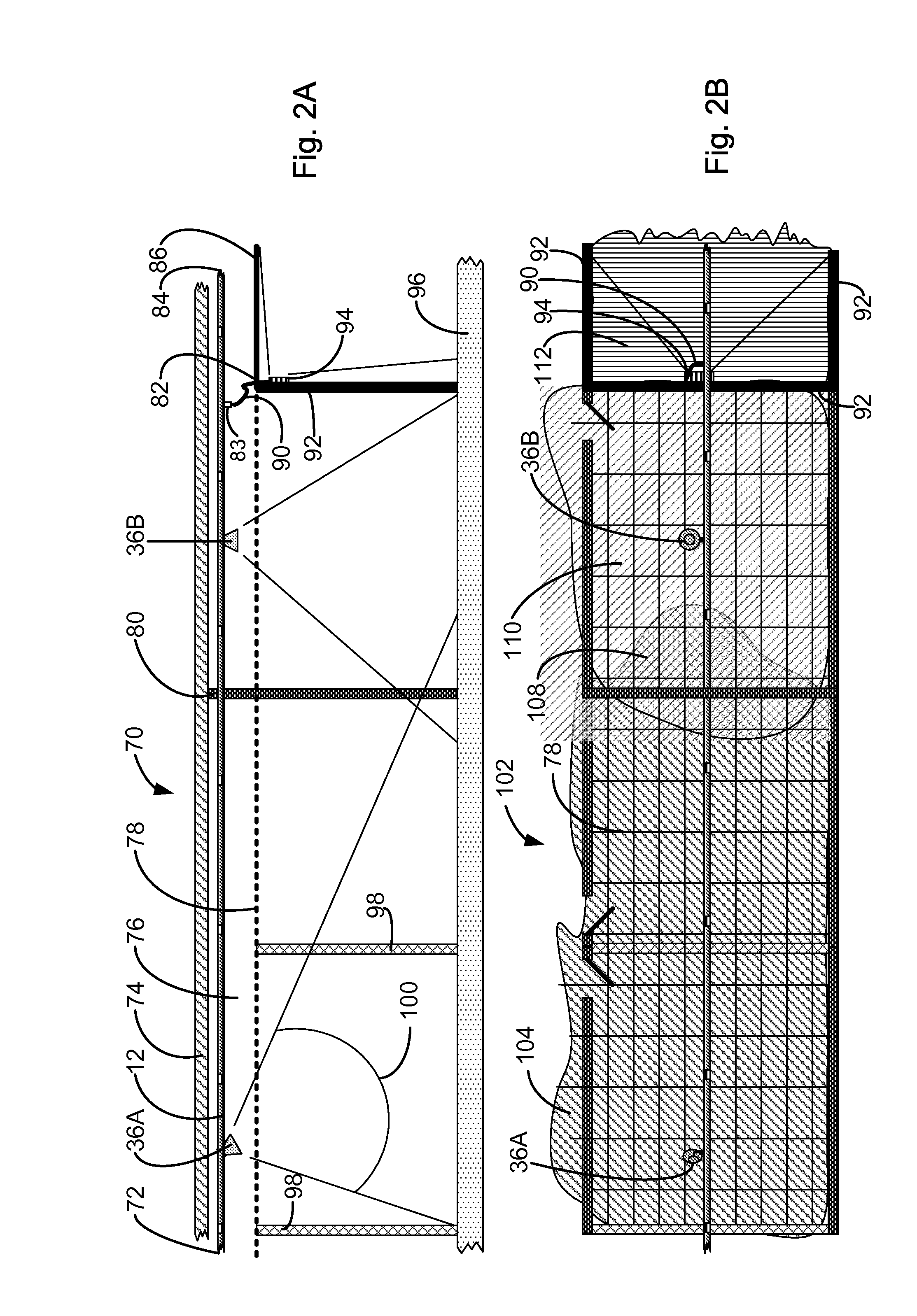Waveguide-based wireless distribution system and method of operation
a wireless distribution and waveguide technology, applied in waveguides, transmission monitoring, high-level techniques, etc., can solve the problems of time distortion and fade of encoded data on radio frequencies, moderately better recovery of transmitted signals, and becoming increasingly difficult to provide reliable communications to users of higher-speed wireless data, voice and video services, etc., to achieve high-efficiency waveguide-based wireless distribution
- Summary
- Abstract
- Description
- Claims
- Application Information
AI Technical Summary
Benefits of technology
Problems solved by technology
Method used
Image
Examples
Embodiment Construction
[0037]The disclosed subject matter includes various embodiments of a waveguide-based wireless distribution system shown in the above-listed drawings, where like reference numerals designate like parts and assemblies throughout the several views. Reference to various embodiments does not limit the scope of the claimed subject matter.
[0038]The terms “wireless” and “radio” are used synonymously throughout the Detailed Description to generally refer to any form of wireless, i.e., radio signal communication at any applicable frequency, unless a specific communication scheme and / or frequency is indicated (such as IEEE 802.11b, Bluetooth, etc.).
[0039]FIG. 1 illustrates an exemplary embodiment of a waveguide-based wireless distribution system 10 configured in accordance with aspects of the claimed subject matter in a predetermined bandpass frequency range. The waveguide-based wireless distribution system 10 comprises a waveguide 11, which is composed of one or more waveguide...
PUM
 Login to View More
Login to View More Abstract
Description
Claims
Application Information
 Login to View More
Login to View More - R&D
- Intellectual Property
- Life Sciences
- Materials
- Tech Scout
- Unparalleled Data Quality
- Higher Quality Content
- 60% Fewer Hallucinations
Browse by: Latest US Patents, China's latest patents, Technical Efficacy Thesaurus, Application Domain, Technology Topic, Popular Technical Reports.
© 2025 PatSnap. All rights reserved.Legal|Privacy policy|Modern Slavery Act Transparency Statement|Sitemap|About US| Contact US: help@patsnap.com



